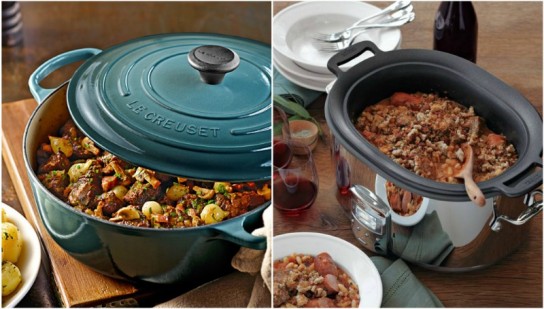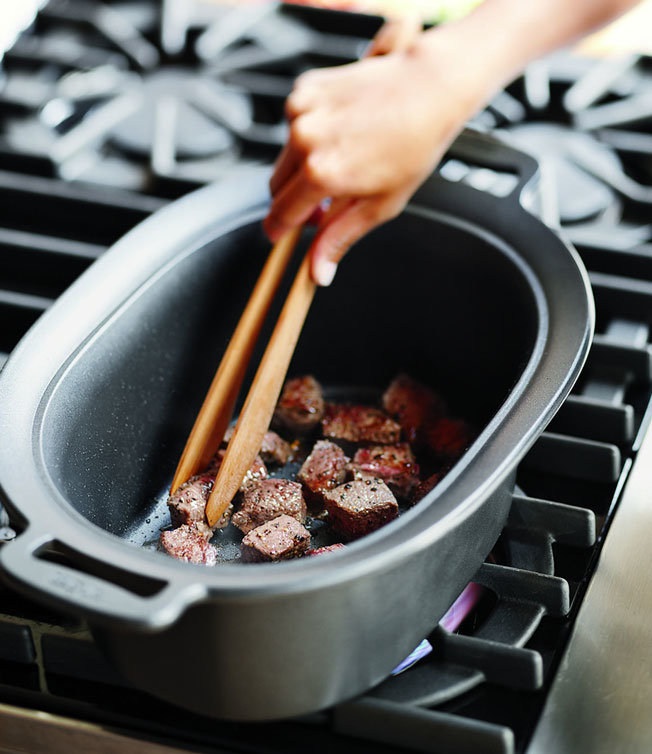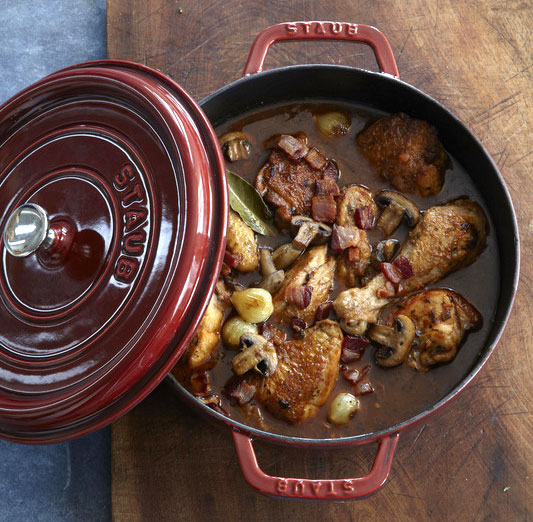Pot Roast Oven Vs Slow Cooker

Most recipes calling for a slow cooker or Dutch oven start out the same way: brown the protein, saute the vegetables, add the liquid and cook. In a slow cooker, you select a high or low setting and let the machine do the work, while a Dutch oven braises on a stovetop or in an oven.
Because the two methods are so similar, they're easily interchangeable. As we turn to cozy, hearty stews and braises during the chilly fall months, we've had plenty of requests from customers wanting to try our slow cooker recipes in their Dutch ovens (or vice versa) so we tapped test kitchen cook Melissa Stewart for advice. Read on for her tips and guidelines!
Method
A Dutch oven has the advantage of using one pot from start to finish—you can sear proteins in the same pan you use to braise. When using a Dutch oven, you can braise on the stovetop or in the oven. If you choose the stovetop, be mindful—you will need to stir occasionally and check the heat under the burner to make sure the bottom of the pan isn't burning or sticking. For that reason, Melissa tends to prefer braising in the oven at 325º to 350ºF.

Many slow cookers lack the ability to brown meat, requiring you to use a separate pan for the initial stage and then add everything back into the machine. Look for a slow cooker with an insert that can be used on the stovetop, too. From there, the difference between the two methods is just a question of cook times.
Timing

Every recipe is different, so cooking times will vary—especially when you're using a different vessel than the one called for. Be sure to check on the dishes as they cook to be sure you have plenty of liquid. Here are some average cook times for proteins:
- Chicken: 1 to 1 1/2 hours in a Dutch oven; 2 hours high setting in slow cooker
- Cubed meat (lamb, beef or pork): 2 to 3 hours in a Dutch oven; 2 to 3 hours high setting in slow cooker
- Whole shanks or larger cuts: 3 to 4 hours in Dutch oven; 4+ hours high setting in slow cooker (the larger the cut, the more time required)
- Beans: Soak in cold water overnight. Cook 1 to 2 hours in Dutch oven; 2 to 3 hours high setting in slow cooker
Note: To use a slow cooker's more gentle low setting, cook for about twice the amount of time you would on high.
For large cuts, try this trick: place a piece of foil under the lid of the Dutch oven so that the liquid doesn't over-reduce. Consider turning large roasts about 2/3 through the cooking time to make sure both sides are equally tender. Check the meat as it cooks; add more liquid if needed. Or, add more water at the beginning of cooking, and you can reduce it in the oven or on the stovetop once the protein is done.
As for vegetables, tough roots such as turnips and carrots can take a considerable amount of time. Melissa recommends adding any large chunks of vegetables at the same time you add the protein to a braise.
Pros & Cons
Reduction: A slow cooker doesn't reduce liquid the same way a Dutch oven does, so the resulting braises and stews may be thinner. However, you can still reduce the dish yourself—just remove the contents (or slow cooker insert) from the machine and reduce on the stovetop.
Space & Convenience: A slow cooker doesn't require an oven, so cooks have the flexibility to use burners and ovens for other dishes. Also, you can use slow cookers to keep finished dishes warm, like your Thanksgiving mashed potatoes.
Capacity: Most slow cookers have a large capacity—around 7 quarts—so they can accommodate plenty of servings and easily feed a crowd. Dutch ovens come in a range of sizes, from 1 quart to more than 13.
Summary
Article Name
Slow Cooker and Dutch Oven Conversion Guide
Description
Learn differences between using a slow cooker and a Dutch oven. See our conversion guide to change Dutch oven recipes to slow cooker recipes and vice versa.
Pot Roast Oven Vs Slow Cooker
Source: https://blog.williams-sonoma.com/slow-cooker-vs-dutch-oven-a-conversion-guide/
Posted by: radleythemblent.blogspot.com

0 Response to "Pot Roast Oven Vs Slow Cooker"
Post a Comment